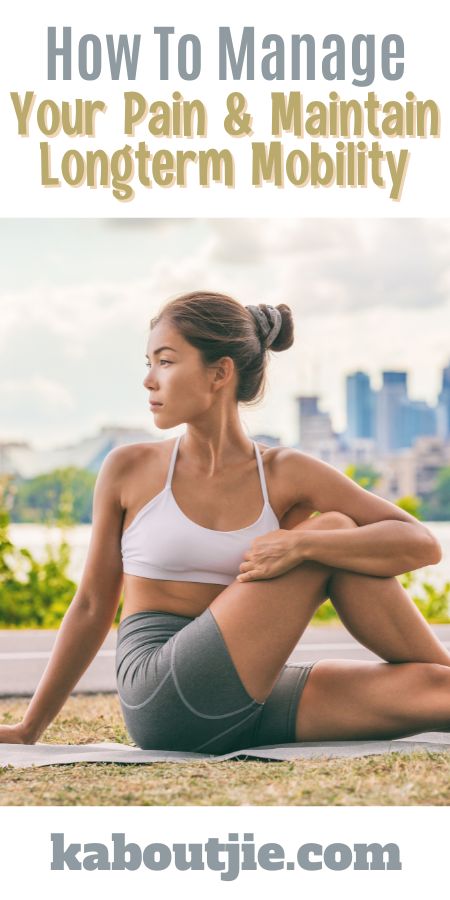Many of us know the distressing pang of acute pain. Be it a sprained ankle or a painful back, our body’s natural response is to tense up and limit movement to protect itself. While beneficial for a short time, this reaction can be harmful if it persists. The fear and anticipation of pain can impede our mobility, affecting our daily routines and quality of life. But what if exercise can be your secret weapon against pain?

According to research, movement and physical activity can significantly reduce pain and enhance function for those experiencing musculoskeletal pain. Even in situations where you may have a medical condition like osteoarthritis or have undergone back surgery, movement and exercise are pivotal to your recovery. Depending on your medical conditions, consider suitable services of specialised professionals, such as hand therapy Townsville, who can offer targeted treatments to alleviate hand and wrist pain while improving their function and physical activity.
Think of it like this: If we compare exercise with paracetamol, in a context such as lower limb osteoarthritis, the benefit (or ‘effect size’) of exercise outweighs that of the medication. This analogy underscores the notion of exercise as ‘medicine’.
Exercise not only mitigates pain but also improves our ability to carry out everyday tasks like household chores, work, or socialising. The domino effect of this improvement includes reduced disability, lessened depression, enhanced physical conditioning, and an overall better quality of life.
However, acknowledging the need for exercise and actually integrating it into our daily routine can seem like trying to fit a square peg into a round hole. So, how do we navigate this? Think of your pain management journey as a jigsaw puzzle. One of the central pieces of this puzzle is movement.
Movement For Your Health
The benefits of movement and exercise are numerous. It helps to dial down the ‘pain volume’ by tapping into the body’s own built-in pharmacy. It reassures you that some pain with movement is normal and not indicative of further harm. Regular physical activity helps regulate sleep patterns, reduce stress, improve mood, and enhance your immune function. It’s also beneficial for your overall health, including heart, lungs, muscles, joints, and weight control.
Sometimes, pain can feel like an insurmountable barrier to exercise. We react to pain by either stopping movement, altering it, or excessively moving, despite the pain. But remember, your beliefs about pain can substantially affect your recovery. Unhelpful beliefs such as “hurt equals harm” or “I am doing more damage because I have more pain” can slow down your recovery and make you more susceptible to persistent pain. It’s vital to check with a health professional to dispel any misconceptions and guide your movement and exercise decisions.
It’s also crucial to manage our emotional responses to pain. Negative thoughts, worries, fears, or mood fluctuations in response to anticipated or actual pain can amplify the perceived threat of pain, leaving us feeling helpless. In such cases, professional help can be valuable.

Tailored Exercise For You
Remember, there’s no ‘one size fits all’ approach to exercise. A balanced exercise plan should typically include ‘good for your health’ exercise, relaxation and stretching, strength and conditioning, and balance and agility activities.
The ‘good for your health’ exercise, such as walking, cycling, or swimming, is beneficial and doable for most people. Relaxation and stretching programs like yoga, tai chi, or simple stretching and breathing can be beneficial for those experiencing stiffness or stress.
For instance, the beneficial effects of massage chairs can subtly provide this relaxation while improving blood circulation. The rhythmic pressure on your muscles and tissues offered by these chairs is an additional perk for people facing chronic pain issues. Reconditioning exercises, on the other hand, need to be tailored to your specific issue and may involve strengthening certain muscles or learning new ways to move.
The Journey Of Exercise
Starting your journey with exercise can seem daunting, but remember, there’s never a ‘right time’. Taking the challenge of starting regular, sensibly paced activity is the first crucial step towards improving your quality of life.
This journey requires courage, effort, and commitment. Start with a daily exercise you enjoy and remember that experiencing a temporary increase in pain, body soreness, or stiffness when starting to exercise is a positive, body re-training response. It’s part of your body’s adaptation to a new routine.
The path to maintaining long-term mobility can be challenging, but with the right approach to exercise, activity, function, and quality of life, you can overcome the hurdles. Embrace the time-contingent approach to exercise, where you gradually increase your activity despite the pain. If you find this tough, remember you can seek support from friends, family, or healthcare professionals.
In conclusion, while managing your pain and maintaining long-term mobility can be daunting, integrating regular physical activity and movement into your daily routine can be a game-changer. Let exercise be your secret weapon to combat pain, and with commitment, persistence, and patience, you’ll be on your way to a healthier, more mobile life.
 Kaboutjie SA Mommy Blogs by Lynne Huysamen
Kaboutjie SA Mommy Blogs by Lynne Huysamen




